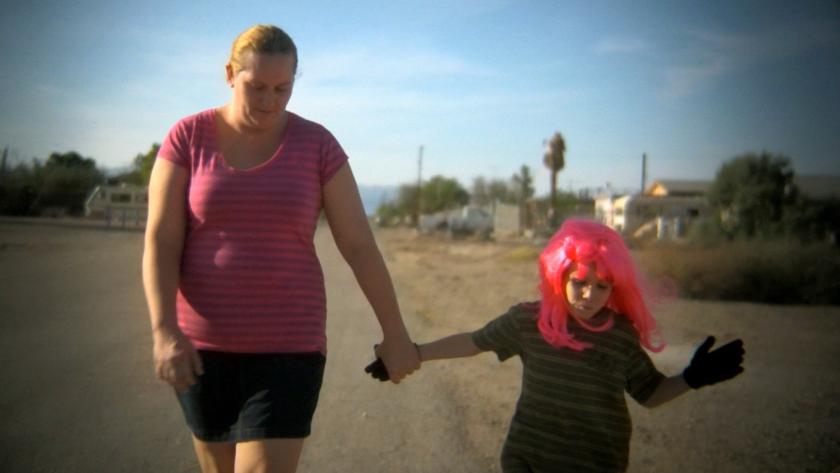I can’t help thinking of Mad Men when watching the opening sequence of Alma Har’el’s marvellous documentary Bombay Beach. Newsreel footage from the 1950s excitedly trumpets the “miracle in the desert” of the Salton Sea, formed by accident when the Colorado River ran wild, and the heart of a development scheme that was to turn the area into “the recreational capital of the world”.
One can imagine the likes of Don Draper having a field day with the promise of the American Dream in this strangely idyllic Californian setting. Not surprisingly, the dream soon turned to dust, as the reality of the locale had its say. And today Bombay Beach is a ghost town, littered with the derelict remnants of its former ambition and the dead fish thrown up by the polluted water, the tiny population that remains forming a colourful community of misfits.
 In her first feature, Israeli-born Har’el casts a sympathetic eye on this community, one which provides a much-needed corrective to the many depictions of a certain kind of marginalised American as “trailer trash". She has three main subjects: “Red” Forgy, a craggy old-timer who has lived most of his life in the community; Benjamin, a 10-year-old with bipolar disorder (pictured above right); and the teenager Ceejay, a refugee from LA’s South Central, sent to Bombay Beach by his mother to avoid the fate of a murdered cousin.
In her first feature, Israeli-born Har’el casts a sympathetic eye on this community, one which provides a much-needed corrective to the many depictions of a certain kind of marginalised American as “trailer trash". She has three main subjects: “Red” Forgy, a craggy old-timer who has lived most of his life in the community; Benjamin, a 10-year-old with bipolar disorder (pictured above right); and the teenager Ceejay, a refugee from LA’s South Central, sent to Bombay Beach by his mother to avoid the fate of a murdered cousin.
Rather than employing a narrative voice-over, the director allows the characters themselves to tell their stories. The most distinctive voice is that of the desert-philosopher Red, whose comments about love and childhood are rather profound, but who keeps his own missteps in life to himself. Red loves the place, zooming around on his dune buggy, making his scant living by buying tax-free cigarettes from the Indian reservation and selling them to his neighbours, prepared to brandish a gun if he doesn’t like the look of a newcomer.
Benjamin’s parents were once jailed for having a bombing range outside their home, but are loving parents who still carry the guilt of having let themselves, and their children down. Living in a place that is 50 miles from the nearest doctor isn’t helping their troubled son. While neither they nor Red are ever likely to leave, Ceejay is already planning his escape. A thoughtful and sensitive young man, he’s working hard at college and hoping that a football scholarship will whisk him out of the desert.
 Har’el’s background is as a photographer and video artist, best-known for music videos (frequent collaborator Zach Condon, from the band Beirut, provides original music for the film) and she brings her experience to bear on a documentary style that adds a new dimension to the form.
Har’el’s background is as a photographer and video artist, best-known for music videos (frequent collaborator Zach Condon, from the band Beirut, provides original music for the film) and she brings her experience to bear on a documentary style that adds a new dimension to the form.
Her seemingly spontaneous approach to the camerawork offers both a rough-hewn authenticity to the fly-on-the-wall, and the occasional image of breathtaking beauty. A close-up of Benjamin as he is teased by some girls for not having any “class”, with the American flag filling the background, speaks volumes about the boy’s alienation from his culture.
Elsewhere, Har’el’s audio sometimes becomes separated from the image to which it belongs, lending a wistful quality to scenes of young people making their own entertainment in this barren place. But her most striking intervention is when she encourages her subjects to dance – Ceejay and his friends breakdancing amongst derelict buildings, Red hoofing with some elderly lady friends, most poignantly when Benjamin and his aforementioned tormenters depict his isolation in a choreographed display. Such touches add nuance to a film which, despite its brevity, leaves an indelible impression.














Add comment